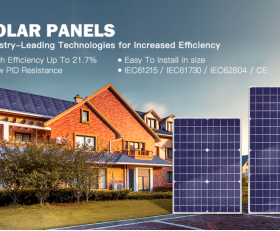How to Optimize Home Storage for Peak/Off-Peak Electricity Rates
In today’s energy landscape, optimizing your home’s energy storage system is a smart move for both your wallet and the environment. Whether you’re looking to save money or reduce your carbon footprint, understanding how to maximize the efficiency of your battery storage and implement strategies for battery recycling can make a significant difference. This guide will walk you through the essential steps to optimize your home storage for peak/off-peak electricity rates.
Understanding Peak/Off-Peak Electricity Rates
Before diving into optimization, it’s crucial to understand the basics of peak/off-peak electricity rates. These are pricing structures set by utilities companies to encourage consumers to use electricity during off-peak hours (typically when demand is lower) rather than during peak times (when demand is high, such as midday). The goal is to shift energy usage from costly peak periods to more affordable off-peak periods.
The Role of Energy Storage
Energy storage systems, such as batteries, play a pivotal role in managing peak/off-peak electricity usage. These systems allow you to store excess energy generated during off-peak hours for use during peak times. This not only helps in balancing the energy grid but also reduces the need for fossil fuel-based power plants, contributing to a cleaner environment.
Key Factors for Optimal Home Storage
Battery Selection The type of battery you choose is critical for maximizing the efficiency of your energy storage system. Lithium-ion (Li-ion) batteries are the most commonly used today due to their high energy density, durability, and relatively low cost. However,铅酸电池 (Lead-Acid) and nickel-based batteries are still used in some applications for their reliability. It’s essential to select a battery that aligns with your energy needs and budget.
Charging and Discharging Patterns Properly managing the charging and discharging cycles of your battery is crucial. You should ensure that your battery is fully charged during off-peak hours when electricity is cheaper and discharged during peak times to avoid being charged higher rates. This strategy helps in maximizing the cost savings from peak/off-,peak pricing.
Grid-Scale Integration If you’re using renewable energy sources like solar panels, integrating them with your storage system can be game-changing. Solar panels generate electricity during peak times but can store excess energy during off-peak hours. This allows you to use the stored energy to offset the cost of peak electricity, making your energy usage more economical.
** smart Grid Connectivity** A smart grid is a modern electricity network that uses digital technology to monitor and manage the flow of electricity. By connecting your home to a smart grid, you can access real-time data on electricity prices and adjust your energy usage accordingly. This enables you to optimize your storage system by shifting energy usage to off-peak times.
Regular Maintenance Like any other appliance, your battery needs regular maintenance to ensure optimal performance. This includes checking the state of charge, ensuring the battery is fully discharged before use, and cleaning any debris that might interfere with performance. Regular maintenance can prevent costly repairs and extend the lifespan of your battery.
Strategies for Battery Recycling
While optimizing your home storage system focuses on cost and efficiency, it’s equally important to think about the environmental impact. Battery recycling plays a crucial role in reducing waste and conserving natural resources. Here are some steps you can take:
Inspect Your Batteries At the end of the battery’s useful life, inspect it for signs of wear and tear. If you can still use it, charge it for a few more cycles. Once it’s no longer functional, separate the battery from other waste to ensure it is properly disposed of.
Recycle Electronics with Batteries Many electronics, such as smartphones, laptops, and even appliances like refrigerators, contain rechargeable batteries. Check your local electronics recycling guidelines to ensure you are complying with regulations and contributing to a circular economy.
Participate in Battery Recycling Programs Participating in local battery recycling programs can not only help reduce waste but also provide an additional revenue stream for manufacturers. Always verify the specifics of any recycling program to ensure compliance.
Educate Yourself and Your Community Educating yourself and your community about the importance of battery recycling can help drive broader change. By understanding the environmental impact of battery waste and the benefits of recycling, you can advocate for stronger regulations and better practices.
Optimizing your home storage system for peak/off-peak electricity rates is a simple yet effective way to save money and reduce your carbon footprint. By selecting the right type of battery, managing charging and discharging patterns, integrating with renewable energy sources, and staying connected via a smart grid, you can maximize the benefits of your storage system. Additionally, taking proactive steps to recycle your batteries ensures that you are contributing to a sustainable future. So, whether you’re saving money or protecting the planet, optimizing your home storage system is the way to go.

